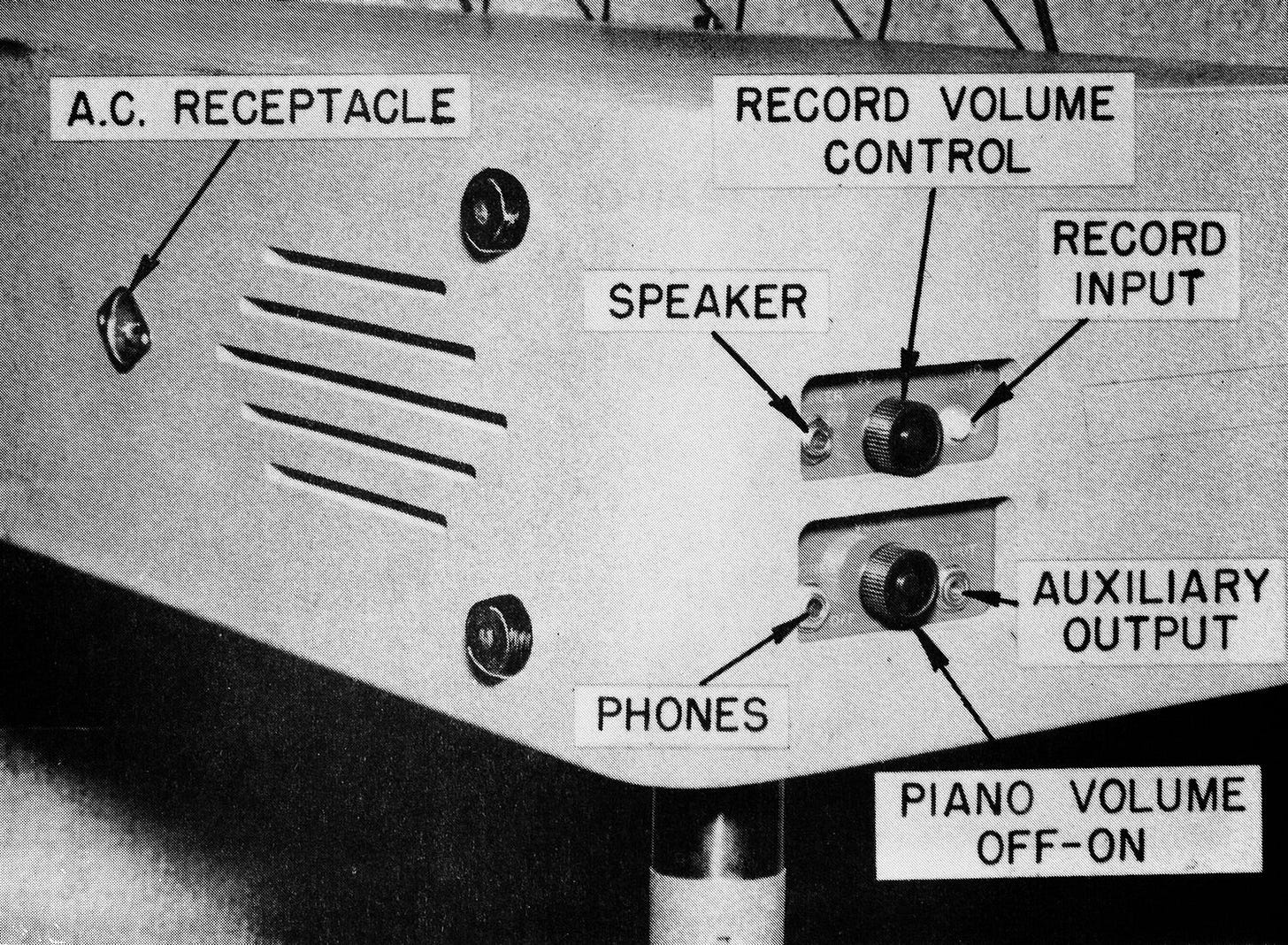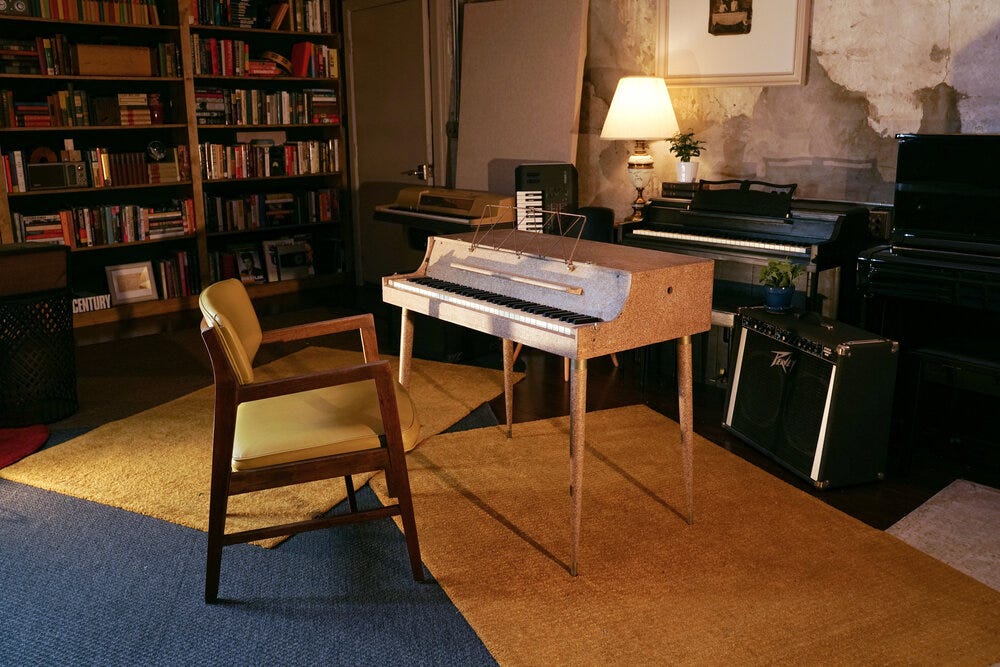How to mod your Wurlitzer 112 amplifier for more gain
Plus: the difference between a 112 and a 5E3 (not much, actually!)
Compared to future Wurlitzer models, the 112 has a generously appointed circuit. With two preamp tubes and a push-pull 6V6 output, it is a lot like a Fender 5E3. In fact, you could almost turn your 112 into a stock 5E3, if you wanted to, with just a light rearrangement of preamp components.
But the 5E3 is a guitar amp, a tweed box that doesn't even make sound by itself. The tone generator is sold separately. The Wurlitzer, on the other hand, is a keyboard. It has 64 keys for the user to play with, independent of any electronics. People bought the Wurlitzer 112 because it was portable and high-tech, but they didn't buy it specifically for its amplifier. The 5E3, on the other hand, was bought as an amplifier, because it doesn't do anything else.
In one sense, the 112 amp and the 5E3 have the same job: to transform a small audio signal into a big one. But while the 112 amplifier is just a line item on the electronic piano's spec sheet, the 5E3 has to make its own case that it is worth the purchase. This is why the 5E3 is loud and powerful and has a whole control panel of knobs and jacks to fiddle with. Ultimately, it made the case so thoroughly that, today, listening to someone talk about the Fender amps of the era, you might imagine that the amp contributes more to music than either the guitar or the player.
While guitarists were establishing the 5E3's legacy as one of the most coveted pieces of gear on earth, Wurlitzer cut and pruned the 112's circuit into the cheap and sparse 120. The 120 is minimally customizable. You can change the frequency response, a little bit, if you want to—and that's about it. On the other hand, the 112 has enough circuitry to become an entire different amplifier: loud, powerful, and able to interface with today's recording equipment.
In original condition, though, the 112 squanders a lot of its power. First of all, it uses two 12AU7 preamp tubes, which provide the lowest gain in the 12A*7 family. Second, R20 is something of an anti-tone resistor: it attenuates the signal without the benefit of a bright cap to compensate for loss of high end.
In light of Wurlitzer's marketing campaign for the electronic piano, these engineering decisions make sense. In advertisements, Wurlitzer claimed that their electronic pianos sounded just like an acoustic piano. And, since a "real" piano doesn't overdrive, the 112 shouldn't either.
In reality, it is possible to make even a stock Wurlitzer overdrive if you hit it hard enough, and—either way—the 112 doesn't sound anything like an acoustic piano. But the company stuck to their story. (They wanted to sell electronic pianos to schools.) And so they designed the 112 amp to be as quiet and mellow as a 60-watt tube amp allows.
This is the difference between the 112 and the 5E3. The 5E3's circuit embraces volume and gives the user a modest ability to tweak the tone. The 112 doesn't do either of these things, despite having a near-identical circuit. It's supposed to be a piano, and a piano doesn't have a tone knob or a volume knob. When you sit down at a piano, you get the sound you're given.
All of this means that Wurlitzer left a lot of volume and tone on the table. Here are three mods to make your vintage 112 amp richer and more powerful than ever before (…plus one more complicated bonus mod at the end).
THREE EASY WURLITZER 112 MODS FOR MORE VOLUME
Follow along with a printable pdf version of the Wurlitzer 112 schematic
Before I begin, one caveat: boosting the 112's signal is probably going to boost the noise as well. I will discuss hum in a later newsletter, but suffice to say that the best way to reduce hum in a 112 is to re-wire the tube heaters. This is a big job because the heater wires are, of course, at the bottom of the chassis, underneath all the layers of point-to-point components. If you are going to make any big circuit changes requiring extensive disassembly—for instance, replacing all capacitors in the amp—it may be a good time to redo the heaters as well. (More on rewiring heaters here.)
And, of course, replacing the filter caps is never a bad idea. Filter caps deteriorate over time and can cause an array of problems. If you're going to be installing mods and listening critically to the results, you should start with a clean canvas: that is, new, reliable filter caps.




